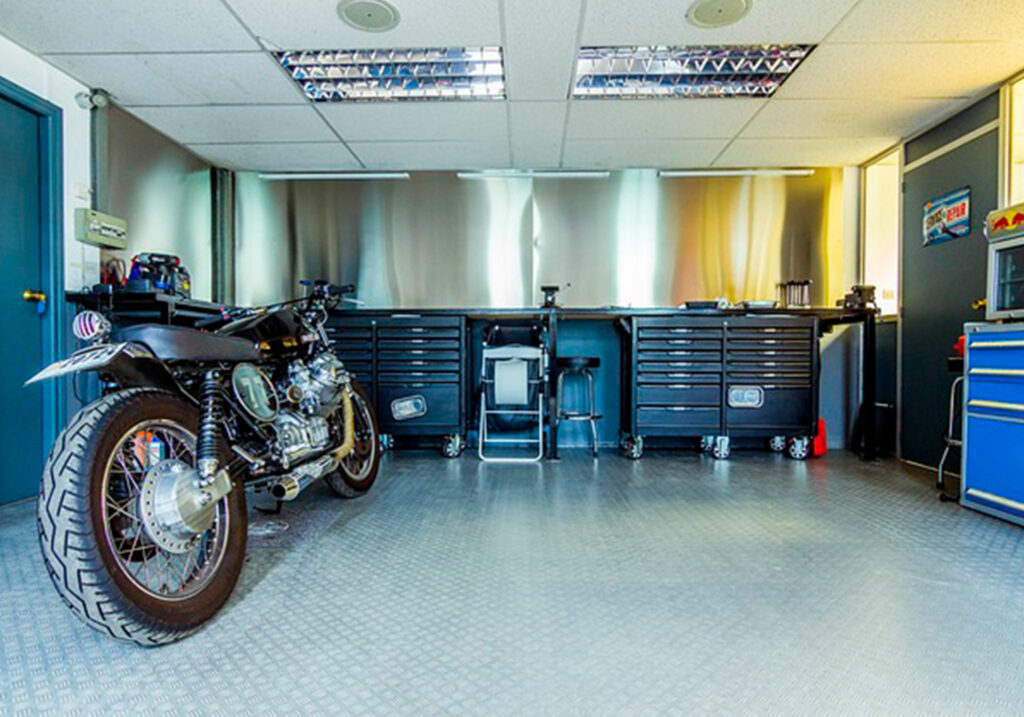Is your family still growing? Do you lack privacy and need more living space at home? Why not convert your garage to a living space?
If you are worried about the cost, then it might interest you to know that converting your garage to an additional living space will cost half of what you would spend when building a bigger home. Now, that’s a great deal!
But before you pick up your tools and buy building materials to convert your garage, there are several things that you will have to consider. Ask yourself, “Can I convert my garage into a living room or bedroom?”
In order for you to have an easier time contemplating, the experts at Lion Garage have laid out this comprehensive guide for you.
Read on.
Assessing the Feasibility
Before embarking on a garage conversion, it is essential to evaluate whether your garage is suitable for transformation. Start by assessing the structural integrity of the space. Examine the foundation, walls, and roof for any signs of damage or wear. A solid foundation and sound structure are crucial for supporting additional insulation, walls, and utilities. If there are any foundational cracks, leaks, or roof damage, these must be addressed before beginning the conversion process to prevent future complications.
Additionally, consider the size and layout of the garage. Single-car garages might have limited space, making them suitable for compact living areas, offices, or studios. Double-car garages offer more flexibility, allowing for more elaborate designs. It’s also vital to check ceiling height requirements and whether there is adequate space for plumbing and electrical systems. Understanding these spatial limitations early on can help you plan the layout effectively and determine the most practical design for the space.
Lastly, consider how the conversion will impact the rest of your property. Evaluate whether losing garage storage will affect your household and if there’s an alternative for vehicle or tool storage. Think about how the new space will integrate with your home’s existing design and flow. Planning for outdoor access, privacy, and noise control will contribute to a comfortable and functional living area.
Legal and Zoning Considerations
Local building codes and zoning laws play a significant role in determining whether you can convert your garage. Contact your local building department to inquire about permits, regulations, and any zoning restrictions that may apply. Some areas have specific requirements for habitable spaces, including minimum ceiling heights, window sizes for natural light and egress, and insulation standards. Understanding these regulations will ensure that your project proceeds smoothly and legally.
Homeowners’ associations (HOAs) may also have rules governing exterior modifications and property use. Ensure compliance with all regulations to avoid costly fines or the need to reverse unauthorized work. This could include restrictions on exterior appearance, parking requirements, or limitations on adding rental units. Consulting with your HOA in the early stages can save you time and money.
Additionally, check if your property is in a flood-prone area or subject to environmental regulations. Some regions may have specific codes concerning energy efficiency, fire safety, or accessibility that must be followed. Failing to meet these requirements can result in delays, increased costs, or legal consequences, so thorough research is crucial.
Budgeting and Costs
Garage conversions can vary significantly in cost depending on the extent of the renovations. Basic conversions might include adding insulation, drywall, flooring, and basic electrical work, costing anywhere from $10,000 to $20,000. More extensive projects, such as adding plumbing for a bathroom or kitchen, installing HVAC systems, and high-end finishes, can increase costs to $50,000 or more. Understanding the scope of your project will help you create a realistic budget.
Creating a detailed budget that includes permits, materials, labor, and unexpected expenses is crucial. It’s wise to set aside an additional 10-20% of your budget for unforeseen costs, such as structural repairs or utility upgrades. Obtaining multiple quotes from contractors and comparing prices can also help you manage expenses effectively.
Hiring a contractor for complex tasks can ensure quality work and code compliance, although it adds to the overall cost. Alternatively, if you have construction experience, handling parts of the project yourself can reduce expenses. Regardless, it’s important to prioritize safety and quality over cutting corners to ensure a successful and lasting conversion.
Designing the Space
Effective design is key to maximizing the functionality and comfort of a converted garage. Begin by determining the intended use of the space—whether it will serve as a bedroom, office, studio, or rental unit. Tailor the layout to suit its function while ensuring proper flow and accessibility. An open floor plan can make smaller garages feel more spacious and inviting.
Incorporate windows and doors to enhance natural light and ventilation. Consider open floor plans to make small spaces feel larger. Insulation and soundproofing are also important for comfort and privacy. Creative storage solutions, like built-in shelves or multi-functional furniture, can help maximize usable space without clutter.
Additionally, think about how the new space connects with the rest of your home. Will you add a new entrance, or will the space flow directly into existing living areas? Incorporating design elements like matching flooring or complementary color schemes can create a cohesive look that blends seamlessly with your home’s existing aesthetic.
Addressing Utilities
Garages typically lack the necessary utilities for living spaces. Extending plumbing, electrical wiring, and HVAC systems into the garage can be complex and costly. Work with licensed professionals to ensure proper installation and adherence to building codes. Upgrading the electrical panel may be necessary to support increased energy demands.
Plumbing is particularly challenging if the garage is detached or distant from existing water and sewer lines. In such cases, alternative solutions like composting toilets or small water heaters might be necessary. Running new pipes or connecting to sewer systems can significantly increase costs and complexity, so this should be carefully evaluated during the planning stage.
Additionally, consider internet and cable connections if the space will be used as an office or entertainment area. Ensuring strong connectivity may require extending your Wi-Fi network or installing additional outlets. Proper planning of utilities will make the space comfortable and functional for everyday use.
Insulation and Climate Control
Garages are not built to the same insulation standards as living areas. Proper insulation in the walls, ceiling, and floors is critical for comfort and energy efficiency. Options include fiberglass batt insulation, spray foam, and rigid foam boards. Sealing gaps and insulating the garage door or replacing it altogether can further improve thermal performance.
Heating and cooling systems need to be extended or supplemented to maintain a comfortable temperature year-round. Options include extending the existing HVAC system, installing a ductless mini-split system, or using portable heaters and air conditioners. Proper ventilation is also crucial to prevent moisture buildup and mold growth.
Climate control not only enhances comfort but also helps protect the investment in your conversion. High humidity, extreme temperatures, or poor airflow can damage furniture, electronics, and finishes. Prioritizing effective insulation and HVAC solutions will ensure the space remains usable and comfortable throughout the year.
Flooring Options
Garage floors are typically concrete, which may be cold and uninviting. Flooring upgrades can include vinyl planks, laminate, carpet, or tile, depending on the intended use of the space. These options can add warmth and comfort while complementing the room’s design.
Ensure the floor is level and free of cracks before installing new flooring. In some cases, adding a subfloor can improve comfort and insulation. A moisture barrier may also be necessary to prevent dampness, especially in humid or rainy climates.
Consider durability when selecting flooring. If the space will be a high-traffic area or used for activities like exercising, choose materials that are resistant to wear and easy to maintain. Thoughtful flooring choices can enhance both the aesthetics and functionality of the space.
Conclusion
There you have it, from the folks at Lion Garages!
Converting your garage to a living space is a great option for you and your family. You would not have to change the floor plan of your current home and also add value to your property. Just make sure you follow the above guidelines so you will have a smooth transition.

